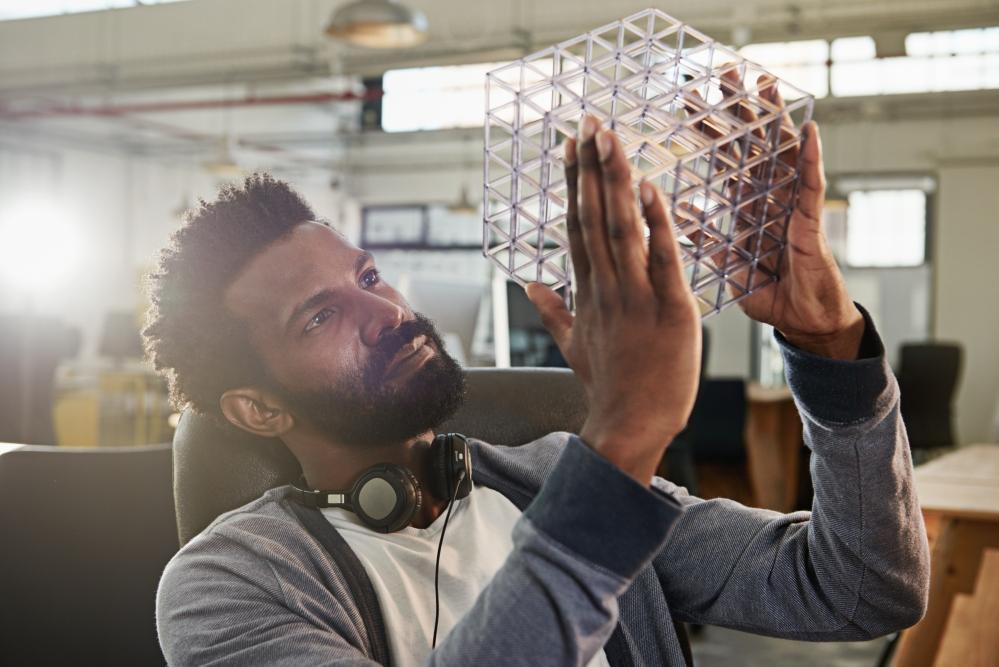- FMA
- The Fabricator
- FABTECH
- Canadian Metalworking
Our Publications
Categories
- Additive Manufacturing
- Aluminum Welding
- Arc Welding
- Assembly and Joining
- Automation and Robotics
- Bending and Forming
- Consumables
- Cutting and Weld Prep
- Electric Vehicles
- En Español
- Finishing
- Hydroforming
- Laser Cutting
- Laser Welding
- Machining
- Manufacturing Software
- Materials Handling
- Metals/Materials
- Oxyfuel Cutting
- Plasma Cutting
- Power Tools
- Punching and Other Holemaking
- Roll Forming
- Safety
- Sawing
- Shearing
- Shop Management
- Testing and Measuring
- Tube and Pipe Fabrication
- Tube and Pipe Production
- Waterjet Cutting
Industry Directory
Webcasts
Podcasts
FAB 40
Advertise
Subscribe
Account Login
Search
Looking at 3D printing three-dimensionally
Think 3D printing is truly three-dimensional in manufacturing? Think again.
- By Kip Hanson
- March 31, 2021
What started as a blog post I wrote in February that suggested additive manufacturing will “turn the electronics industry on its head” has ended up turning my way of looking at AM on its head.
How so? During an interview for a follow-up feature article on electronics slated to run in the Q2 edition of The Additive Report, Kenneth Church, CEO at electronics printer manufacturer nScrypt Inc., made an offhand comment.
“We don’t really 3D-print,” he said. “We two-and-a-half-D print.” It wasn’t until after I hung up the phone that I realized its significance. We will eventually get to true 3D printing, he added, but not until two things occur. The first is that current layer-based AM technology will become more like five-axis machining, with a deposition head able to follow freeform paths in three or more axes simultaneously.
We’re moving in that direction, to be sure. BeAM’s new Magic 800 directed energy deposition (DED) machine, for example, boasts “five continuous axis” printing, as do some hybrid CNC machine tools with DED attachments. And Church went into great detail about nScrpyt’s ability to conform to the miniature hills and valleys of supposedly flat printed circuit boards (PCBs), and to print on tubes and other curved surfaces. More such systems are surely on the horizon.
That brings us to the second thing that must occur before 3D printing becomes truly three-dimensional: We need to start thinking three-dimensionally.
“Humans have been doing things in 2D for so long that we’re not really wired for 3D thinking,” Church said. “I believe it’s our young people who will change that paradigm. They were raised on video games, many of them are already playing with 3D printers in school, and they are therefore better equipped to visualize things in three dimensions. As a result, those that move into manufacturing will design parts differently than we do today.”
As I said, it was a somewhat offhand comment, but it carries profound implications for the future of the AM industry. What will future 3D printers look like? How will they operate, and what doors will they open, especially in light of the advanced materials that are seemingly popping up every day?
Remember, traditional manufacturing processes like machining, casting, and sheet metal fabrication are centuries old. Assuming the human race is still around, it’s fun to consider where additive will be a hundred years from now.
If the medical community finds ways to 3D-print replacement organs, some of us might still be here to find out first-hand.
About the Author

Kip Hanson
About the Publication
- Podcasting
- Podcast:
- The Fabricator Podcast
- Published:
- 04/16/2024
- Running Time:
- 63:29
In this episode of The Fabricator Podcast, Caleb Chamberlain, co-founder and CEO of OSH Cut, discusses his company’s...
- Trending Articles
- Industry Events
16th Annual Safety Conference
- April 30 - May 1, 2024
- Elgin,
Pipe and Tube Conference
- May 21 - 22, 2024
- Omaha, NE
World-Class Roll Forming Workshop
- June 5 - 6, 2024
- Louisville, KY
Advanced Laser Application Workshop
- June 25 - 27, 2024
- Novi, MI



























